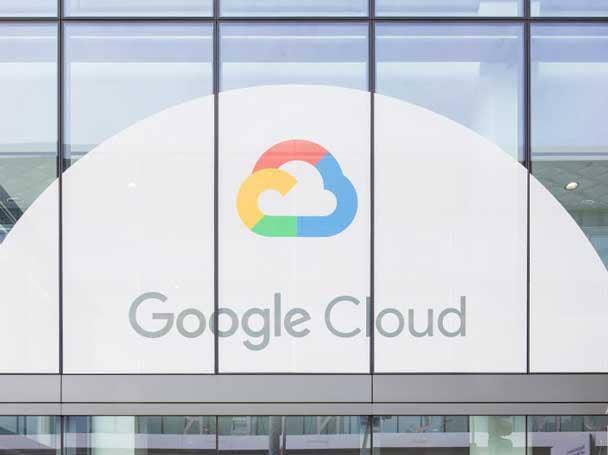Google Cloud ‘Removing Barriers To Entry’ With New Pricing
‘They’re giving customers what they want: more choice, more flexibility,’ SADA CEO Tony Safoian tells CRN.

Google Cloud launched Flex Agreements today, a bold move which allows customers to migrate their workloads to the cloud with no up-front commitments. As part of Google’s new licensing option, customers still get access to Google Cloud incentives such as cloud credits and monthly spending discounts.
“This really opens up a new chapter in what is now a very much consumption-driven world, both for Google Cloud and also for customers and for partners,” said Tony Safoian, CEO of SADA, one of Google Cloud’s top partners in the U.S. “It really lowers the barrier of entry in terms of giving the best of Google Cloud without a big upfront financial constructor.”
Safoian said customers previously needed an upfront commitment—such as signing a large multi-year Google Cloud commitment—in order to reap the benefits of a certain set of incentives like cloud credits or discounts based on monthly spending or committed use. For example, Google’s Committed Use Discounts (CUDs) provide discounted prices in exchange for a commitment to use a minimum level of cloud resources for a specified term.
“Customers knew that in exchange for a multiyear financial commitment, they could receive certain benefits that could improve the economics of their cloud investment, that could lower their risk profile of making the move, etc.,” Safoian said. “But the most important thing is getting a customer started. Why hold back those incentives at a point when customers are ready to dive into this new platform and win this new journey with us?”
[Related: Amazon Vs. Microsoft Vs. Google: Cloud Earnings Faceoff]
“Providing these incentives without a commit will give us more than an ample opportunity to prove the value of Google Cloud and our services over time,” SADA’s CEO said. “They’re giving customers what they want: more choice, more flexibility.”
Google Cloud Launches Three New Pricing Editions
The $29 billion cloud unit also unveiled on Wednesday three new pricing editions: Standard, Enterprise, and Enterprise Plus as part of its cloud portfolio.
“This new commercial packaging model will give customers more choice and flexibility to optimize their cloud spend,” said Google Cloud’s Kelly Ducourty, vice president, go-to-market Strategy and Operations; and Joe Matz, vice president of Business Planning and Pricing, in a blog post today. These new product pricing editions will be rolled out over the next few quarters.
The higher-end Enterprise Plus tier will offer compute, storage, networking and analytics services with high availability, multi-region support, regional failover and disaster recovery, advanced security, and a broad range of regulatory compliance support.
Google Cloud’s new Enterprise pricing tier will include a broad range of features designed for customers with workloads that demand a high level of scalability, flexibility, and reliability. The Standard pricing tier will offer cost-efficient and easy-to-use managed services that include all essential capabilities such as autoscaling to meet the core workload requirements of customers.
‘Removing Barriers To Entry’
Some businesses find it challenging to predict the amount of cloud resources they will need in the months or years ahead, which is why Flex Agreements was created.
“Every organization is on its own unique cloud journey. To help, we’re developing new ways for customers to consume and pay for Google Cloud services. We’re doing this by removing barriers to entry, aligning cost to consumption and rewarding longer-term commitments,” said Google Cloud’s Ducourty and Matz.
The new pricing tiers and Flex Agreements can help Google partners aid their customers during a uncertain economy ahead in 2023.
SADA’s CEO Safoian said customers want more spending flexibility and cloud choice during “these strange macroeconomic times.”
“Every customer, in general, is dealing with more pressure: whether it’s from investors or their board to save where they can without significant upfront financial construct obligations if they can be avoided. The construct of the new Flex Agreements allows it,” he said. “Then these different tiers and pricing are just an additional layer of flexibility on top of that, which is great.”
He said Google Cloud customers can now either opt into more expensive options—like Enterprise Plus—if their mission critical needs meet those requirements, or they can go with the Standard edition offering to save money if it’s more appropriate for their workloads.
“Google is meeting the market where it is today,” said Safoian.
This month, Mountain View, Calif.-based Google Cloud reported fourth quarter 2022 sales of $7.3 billion, an increase of 32 percent year over year.
The company currently ranks No. 3 in terms of cloud market share by winning 11 percent share of the global cloud services market in fourth quarter 2022, up 1-point year from 10 percent share in fourth quarter 2021, according to cloud market data from Synergy Research Group.